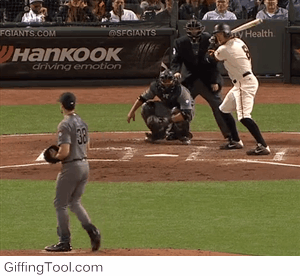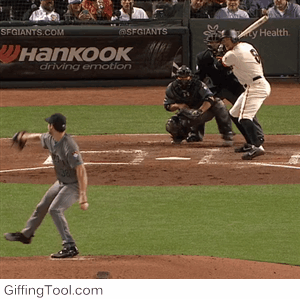Meet the Matz: Of Bone Spurs, Paychecks, and Pennants
On June 30, Mets manager Terry Collins sent left-hander Steven Matz to the mound to face the Chicago Cubs. Matz turned in a modest performance, striking out six in 5 1/3 innings while surrendering two homers. Not a terrible outing, but a club as offensively challenged as the Mets can only afford so many starts like this. What made the outing of more than the usual interest was that this was Matz’ first appearance after the world learned he had a bone spur in his left elbow.
Bone spurs are not generally in and of themselves debilitating, but they can inflict significant pain. And since pain is your body’s way of saying “don’t do that again, you stupid git,” the pain a bone spur causes may in turn cause other changes to the pitcher’s usage patterns and delivery. Those changes might end well, or they might not. A cascade of other injuries and mechanical problems can follow.
So a bone spur presents player and team with a choice: the player can pitch through the injury, at reduced and perhaps increasingly decaying effectiveness, or opt for surgery, which resolves the problem but sidelines the player for several months. In Matz’ case, surgery could doom his season.
If Matz were an entirely independent actor, surgery would seem the rational choice. Like all players, Matz’ overriding goal is to get The Contract: the multiyear 7-8 figure deal that will provide financial independence for Matz and his family for as long they subsist on this benighted orb. (Matz will tell you his overriding goal is to win a World Series, but that’s probably number two on his list.) By skipping the rest of this season and coming back healthy next year, Matz probably boosts the odds of making it to The Contract before critical elements of his body begin to rebel.
But Matz is not truly independent: the Mets organization, his teammates, and Baseball Tradition all exert substantial influence. Peer pressure may play a significant role here. Even John Smoltz, one of the most intelligent minds in baseball broadcasting today, discussed Matz’ bone spur (and Noah Syndergaard’s apparently smaller one) in a recent Fox broadcast with the quit-whining-and-rub-some-dirt-on-it machismo that would hardly have been out of place a century ago.
Smoltz said the pitchers can deal with bone spurs by changing their pitch selection, and there is some evidence Matz is doing just that. He used his slider at a 15% clip in April and May; in June he abandoned it. His velocity, however, is essentially unchanged, and he’s using his other pitches more or less as he always has.
So maybe Matz is reacting to the pain, maybe not. But he would certainly pay a price if he seemed to be reacting in a highly visible way. For all the analytical advancements of the past quarter-century, players are still expected to suffer in silence. Those who don’t may “lose the manager’s trust,” and have fewer opportunities to establish that they merit The Contract. I’m no fan of conformity, but it is sometimes the economically rational decision.
Mets’ GM Sandy Alderson views the Matz dilemma through a substantially different risk-assessment prism. As long as the Mets have a good shot at the playoffs, Alderson has little incentive to see Matz hit The List for any significant length of time, at least unless and until his performance seriously deteriorates. The supposedly pitching-rich Mets have nothing behind their current top five starters. No, not even Rafael Montero, who is putting up a 6+ ERA in Las Vegas this year. What stinks in Vegas stays in Vegas.
Further concentrating Alderson’s mind are the Mets’ playoff odds. This is a borderline playoff team; FanGraphs says the Mets have a 56% chance of making the playoffs, but most of that 56% just puts the Mets in the wild card. Still, that’s a five-point jump from last Wednesday, before the Mets ripped off a four-game sweep of the 1927 Yan– er — I mean, the Cubs. But sadly for the Mets, the division-leading Nationals have also been swatting aside opponents with cavalier disregard — most of the Mets’ playoff gain came at the expense of the Fighting Lorians.
Like Matz, Alderson faces a tough decision: how to balance the future against the now. The Mets are neither clearly bad enough to play for next year, nor clearly good enough to play for this one. Their roster is largely set for the near future; of their significant contributors only Neil Walker will walk at the end of the season, likely to be replaced by Dilson Herrera. The Mets are ninth in attendance, 14th in local television revenue, and 16th in payroll. They are also first in BMI (Bernie Madoff Influenza). This isn’t a team that can likely add a lot of payroll, particularly if they intend eventually to fork over some major bitcoin for at least some of the current starting rotation.
The Mets have three prospects in MLB’s top 100, but just one (Dominic Smith) in the top 50, and Smith barely clears that hurdle at #45. Although showing some increased power this year, Smith threatens to develop into the next James Loney, a threat so grave that Alderson fended it off (momentarily at least) by bringing in the current edition to fill in for the wounded Lucas Duda at first. Young shortstop Gavin Cecchini is raking at AAA to the tune of an .871 OPS, but he only recently found the rake in the back of his garage behind the broken foosball table; his career minor-league OPS is a pedestrian .745. Alderson is showing his faith in Cecchini by filling the Mets’ yawning chasm at third with an incipient public relations disaster.
Alderson has a little time. Playoff chances can swing wildly during the season, as he discovered last year. In three weeks he’ll have a better idea of where the Mets stand, and can then make a decision regarding Matz. If the Mets collapse, then the incentives for both team and pitcher come into alignment, and Matz will likely have surgery. If the Mets surge (they did, after all, finally find Nimmo), then he’ll ask Matz to shut the hell up and rub some dirt on it. Unlike some of his co-rotationists, Matz isn’t a superhero. He’ll do what he’s told, while watching with trepidation as The Contract recedes into the future.


